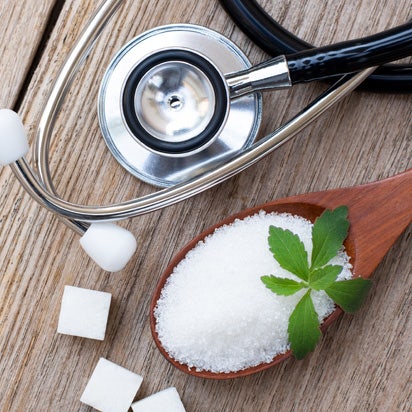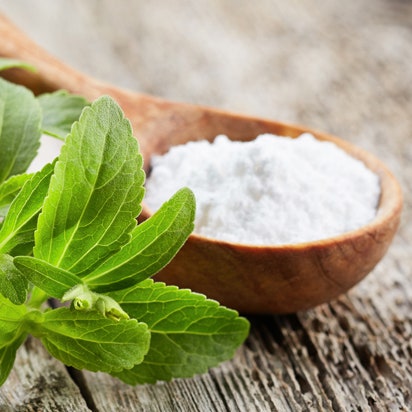
Is stevia safe for children

Managing the consumption of added sugars especially in the diets of children has been an increased focused globally. Plant-based stevia has been closely studied, and been demonstrated to be a safe alternative to sugar and artificial sweeteners.
Multiple global regulatory organizations around the world, including the Joint FAO/WHO Expert Committee on Food Additives, European Food Safety Authority, and the Food & Drug Administration, have determined that high purity stevia extract is safe for consumption by the general population including children, when consumed within the recommended levels.
After a series of reviews and approvals, these regulatory bodies established an Acceptable Daily Intake (ADI) for high purity steviol glycosides (≥95%) expressed in steviol equivalents of up to 4 milligrams per kilogram of body weight per day.
Obesity and wight management continue to be significant public health concerns for children. The World Health Organization (WHO) estimates globally over 18% of children aged 5–19 years are overweight or obese, with levels increasing rapidly in many countries and regions in recent years.1 Globally, in 2019 the number of overweight children under the age of five, is estimated to be over 38.2 million.
Four out of every five obese adolescents will continue to have weight problems as adults3, increasing their risk of type II diabetes, cardiovascular disease, asthma and sleep difficulties, making childhood obesity one of the most serious public health challenges of the 21st century.4
For example, type 2 diabetes mellitus (T2DM) in children and adolescents accounted for less than 3% of all cases of new-onset diabetes in 1990, and today accounts for up to 45% of new-onset cases among adolescents.5
Growing concerns about the rise in childhood obesity has prompted many public health organizations to set new guidelines to help reduce the amount of added sugars in the diet to less than 5% of total energy intake.
WHO recommended in 2015 to reduce the intake of free sugars to less than 10% of total energy intake, with a further reduction to below 5% or roughly 25 grams (six teaspoons) per day for additional health benefits.6 The 2015-2020 Dietary Guidelines for Americans recommends limiting calories from added sugars to no more than 10% each day, which is 200 calories, or about 12 teaspoons, for a 2,000 calorie diet.7 The United Kingdom’s Public Health England (PHE) also adopted a guideline in 2015 to restrict free sugars consumption to less than 5% of the total energy intake, based on a comprehensive review on Carbohydrates and Health by the Scientific Advisory Committee on Nutrition (SACN).8
Current intakes of Non-Milk Extrinsic Sugars (NMES) in the UK exceed these recommendations, and are highest for children aged 4 to 10 years (13.4% of food energy) and 11 to 18 years (15.2% of food energy).9 A recent review collated data from nationally representative dietary surveys across the world and reported estimated intakes of added sugars were higher in school-aged children and adolescents (up to 19% of total energy) compared to younger children.10
The Centers for Disease Control (CDC) issued a Data Brief in January 2017, reporting on consumption of sugar-sweetened beverages among children and adolescents based on the 2011-2014 National Health and Nutrition Examination Survey data.11 The report found that almost two-thirds of boys and girls consumed at least one sugar-sweetened beverage on a given day. Boys consumed an average 164 kilocalories (kcal) from sugar-sweetened beverages, which contributed 7.3% of total daily caloric intake. Girls consumed an average 121 kcal from sugar-sweetened beverages, which contributed 7.2% of total daily caloric intake.
Stevia’s potential to reduce added sugar in children’s diets
In 2016, experts outlined recommendations for food and beverage manufacturers to reduce sugar, including reformulation, reduced portion sizes, labeling and consumer education. The findings from this panel were recently published in the Perspectives of Public Health Journal.12 Of the five recommendations generated, wider use of non-nutritive sweeteners, like stevia, rose to the top for having the greatest potential to help consumers reduce their free sugars intake.
Foods and beverage products containing stevia can play an important role in decreasing calories from unwanted sweeteners in children’s diets. There are now thousands of products containing naturally-sourced stevia on the market ranging from beverages, to salad dressing to snack bars that allow children to consume foods and beverages that taste great without added calories.
With regard to safe stevia intake among children, a cross-sectional study was conducted to obtain practical guidelines for consumption of non-nutritive sweeteners among children with type 1 diabetes.13 The researchers found there is little chance for children with type I diabetes children to exceed ADIs for non-nutritive sweeteners. Based on a modeling exercise they conducted, the researchers established practical guidelines that can be used for non-nutritive sweeteners, such as stevia, in children with type 1 diabetes:
- A maximum of one glass of diet soda (150 ml), one glass of dairy drinks and three slices of bread with the same bread spread-containing sweeteners a day for children with T1D from 4 to 6 years old.
- A maximum of two glasses of diet soda (300 ml) and two glasses of dairy drinks containing sweeteners (300 ml) a day for 7–12 year olds.
- A maximum of three glasses (450 ml) of diet soda a day for 13–18 year olds.
Other stevia science and research
Connect with PureCircle™ by Ingredion
Interested in learning more about PureCircleTM, stevia and the latest stevia leaf ingredients? Please contact us to help inspire your next sweet creation.
REFERENCES
- World Health Organization. (2021). Obesity and overweight. World Health Organization. https://www.who.int/news-room/fact-sheets/detail/obesity-and-overweight WHO Global
- Strategy on Diet, Physical Activity and Health: Childhood Overweight and Obesity, http://www.who.int/dietphysicalactivity/childhood/en/
- Freedman DS, Khan LK, Serdula MK, Dietz WH, Srinivasan SR, Berenson GS. The relation of childhood BMI to adult adiposity: the Bogalusa Heart Study. Pediatrics 2005;115(1):22–7
- Biro FM, Wien M. Childhood obesity and adult morbidities. Am J Clin Nutr. 2010;91(5):1499S–505S.
- Pinhas-Hamiel O, Zeitler P. The global spread of type 2 diabetes mellitus in children and adolescents. J Pediatr 2005;146:693-700
- World Health Organization (WHO). Guideline: Sugars Intake for Children and Adults. Geneva: WHO, 2015.
- U.S. Department of Health and Human Services and U.S. Department of Agriculture. 2015–2020 Dietary Guidelines for Americans. 8th Edition. December 2015. Available at http://health.gov/dietaryguidelines/2015/guidelines/.
- SACN (Scientific Advisory Committee on Nutrition) (2015) Carbohydrates and Health. Available at: www.gov.uk/government/publications/sacn-carbohydrates-and-health-report
- Bates B, Cox L, Nicolson S et al. National Diet and Nutrition Survey: Results from Years 5 and 6 (combined) of the Rolling Programme (2012/13–2013/14). (edPublic Health England and The Food Standards Agency). PHE Publications gateway number: 2016248. London: PHE, 2016. https://www.gov.uk/government/uploads/system/uploads/attachment_data/file/551352/NDNS_Y5_6_UK_Main_Text.pdf
- Newens K.J., Walton J. A review of sugar consumption from nationally representative dietary surveys across the world. (2016) J Hum Nutr Diet. 29, 225–240 doi: 10.1111/jhn.12338
- Rosinger A, et al., (2017). Sugar-sweetened beverage consumption among U.S. youth, 2011–2014. NCHS data brief, no 271. Hyattsville, MD: National Center for Health Statistics.
- Perspect Public Health. 2017 Jul;137(4):237-247. doi: 10.1177/1757913917703419. Epub 2017 Apr 18 https://www.ncbi.nlm.nih.gov/pubmed/28415920
- Dewinter, L. et al (2016) Dietary intake of non-nutritive sweeteners in type 1 diabetes mellitus children, FOOD ADDITIVES & CONTAMINANTS: PART A, 2016 VOL. 33, NO. 1, 19–26 http://dx.doi.org/10.1080/19440049.2015.1112039







